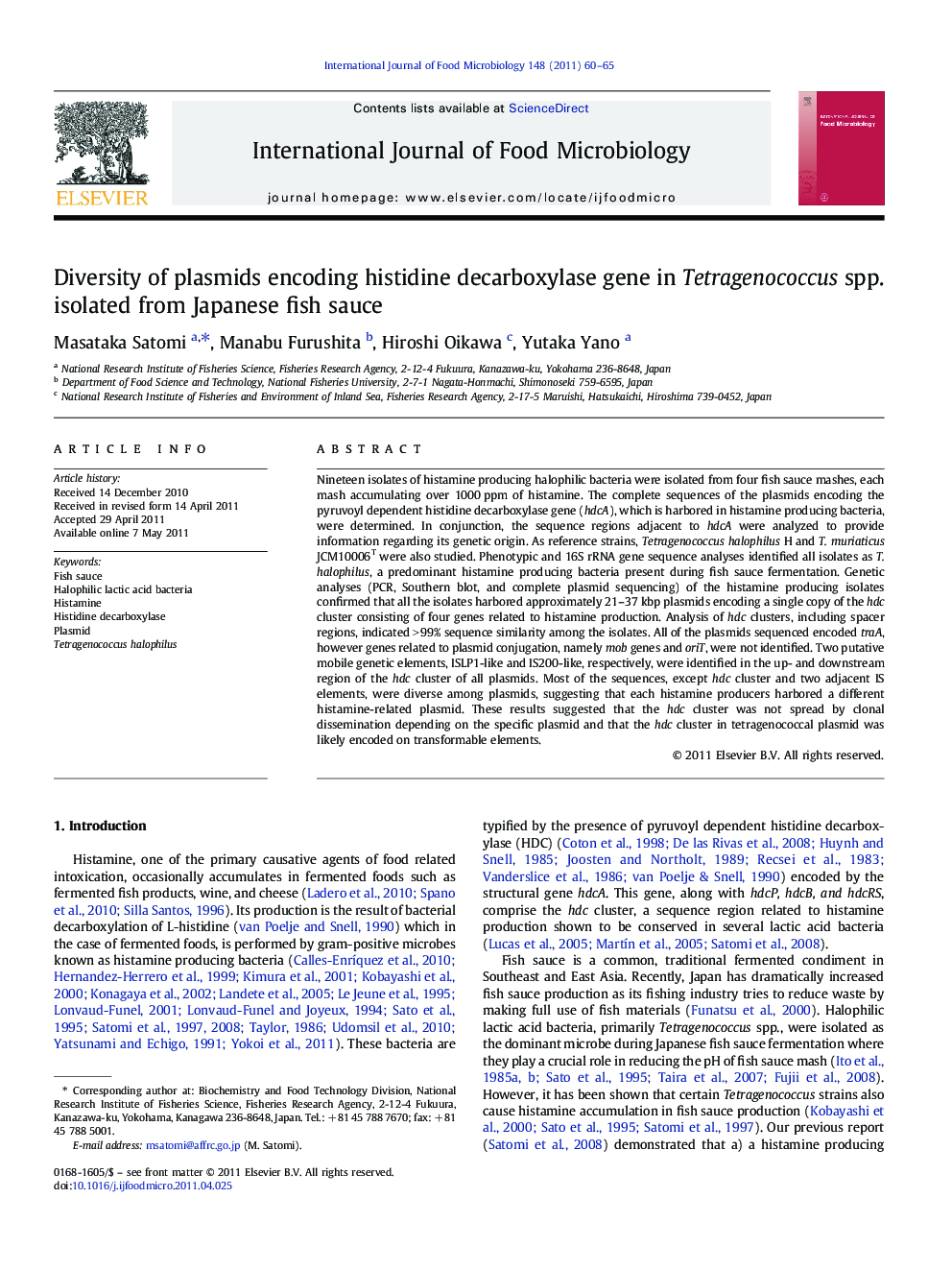| کد مقاله | کد نشریه | سال انتشار | مقاله انگلیسی | نسخه تمام متن |
|---|---|---|---|---|
| 4368358 | 1616666 | 2011 | 6 صفحه PDF | دانلود رایگان |

Nineteen isolates of histamine producing halophilic bacteria were isolated from four fish sauce mashes, each mash accumulating over 1000 ppm of histamine. The complete sequences of the plasmids encoding the pyruvoyl dependent histidine decarboxylase gene (hdcA), which is harbored in histamine producing bacteria, were determined. In conjunction, the sequence regions adjacent to hdcA were analyzed to provide information regarding its genetic origin. As reference strains, Tetragenococcus halophilus H and T. muriaticus JCM10006T were also studied. Phenotypic and 16S rRNA gene sequence analyses identified all isolates as T. halophilus, a predominant histamine producing bacteria present during fish sauce fermentation. Genetic analyses (PCR, Southern blot, and complete plasmid sequencing) of the histamine producing isolates confirmed that all the isolates harbored approximately 21–37 kbp plasmids encoding a single copy of the hdc cluster consisting of four genes related to histamine production. Analysis of hdc clusters, including spacer regions, indicated > 99% sequence similarity among the isolates. All of the plasmids sequenced encoded traA, however genes related to plasmid conjugation, namely mob genes and oriT, were not identified. Two putative mobile genetic elements, ISLP1-like and IS200-like, respectively, were identified in the up- and downstream region of the hdc cluster of all plasmids. Most of the sequences, except hdc cluster and two adjacent IS elements, were diverse among plasmids, suggesting that each histamine producers harbored a different histamine-related plasmid. These results suggested that the hdc cluster was not spread by clonal dissemination depending on the specific plasmid and that the hdc cluster in tetragenococcal plasmid was likely encoded on transformable elements.
Research highlights
► Histamine producing halophilic bacteria were isolated from fish sauce mashes.
► All of histamine producers were belonging to the genus Tetragenococcus.
► Isolates harbored different size of plasmids encoding hdc cluster consist of 4 genes.
► Putative mobile genetic elements were found at the adjacent region of hdc cluster.
Journal: International Journal of Food Microbiology - Volume 148, Issue 1, 15 July 2011, Pages 60–65